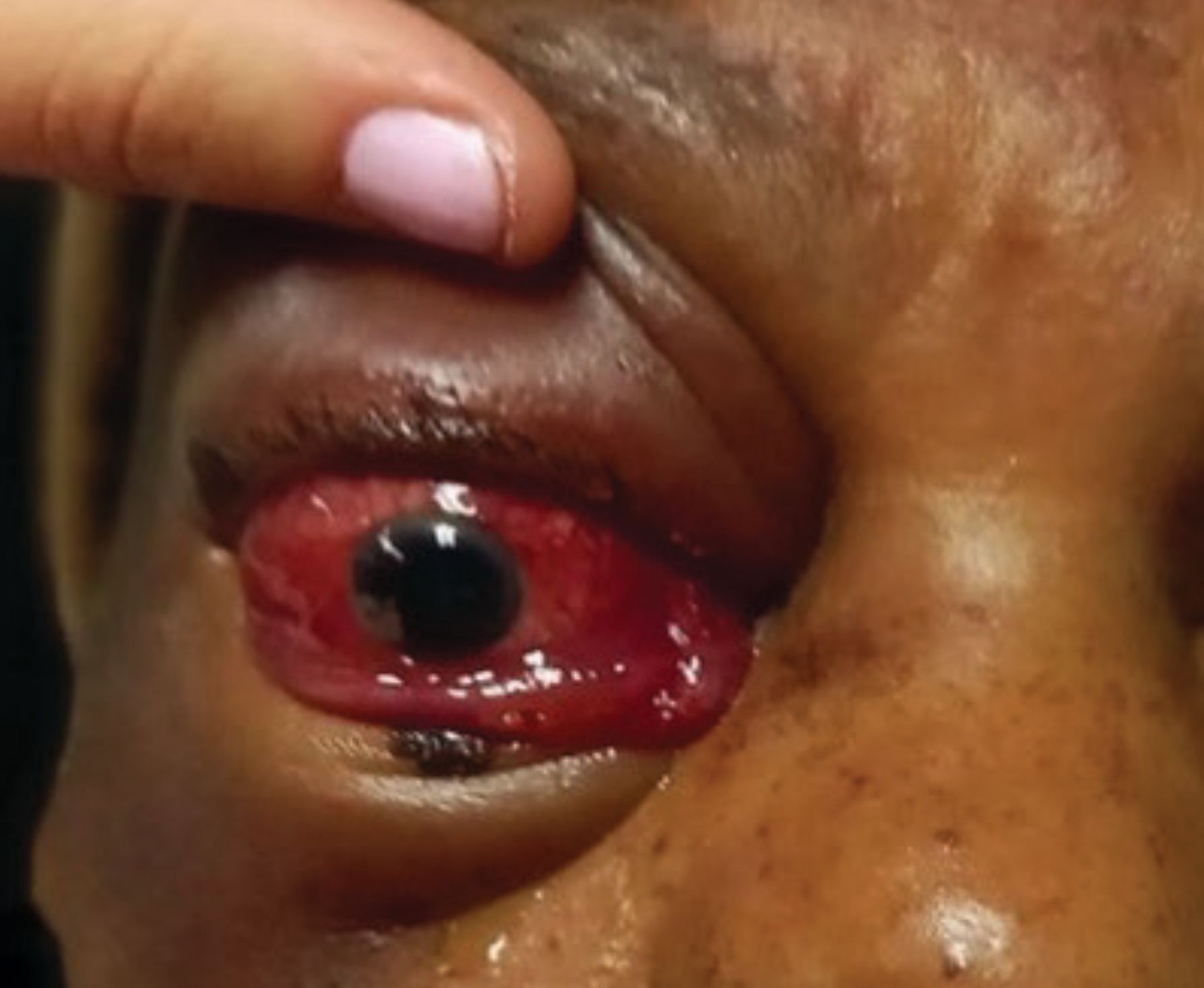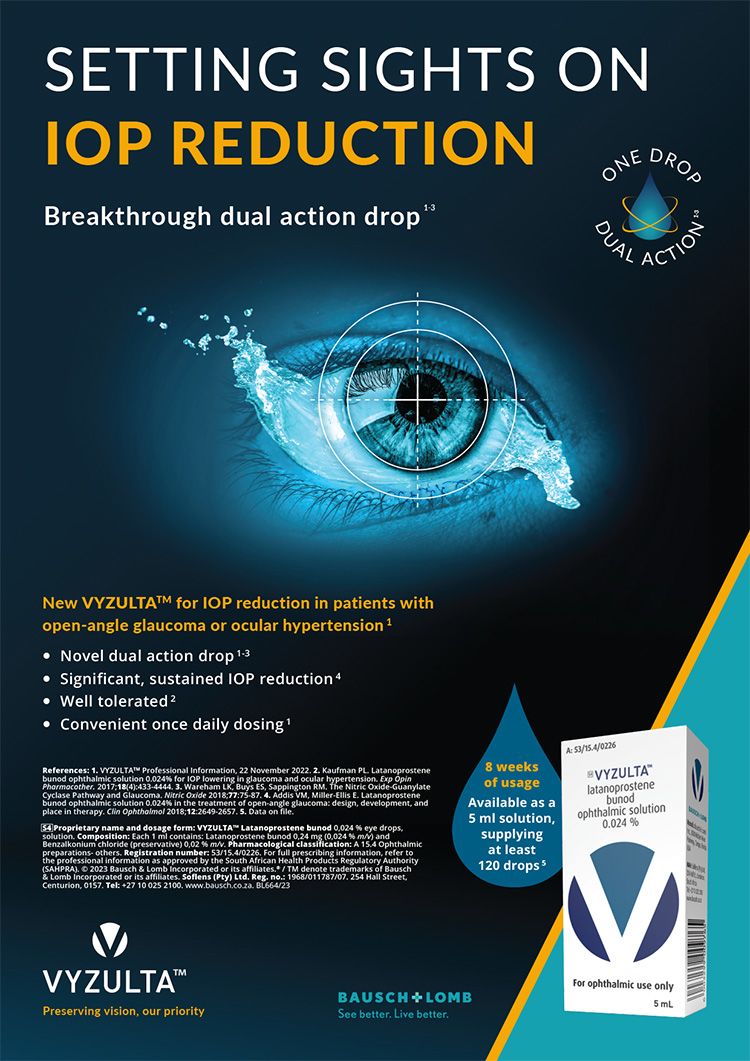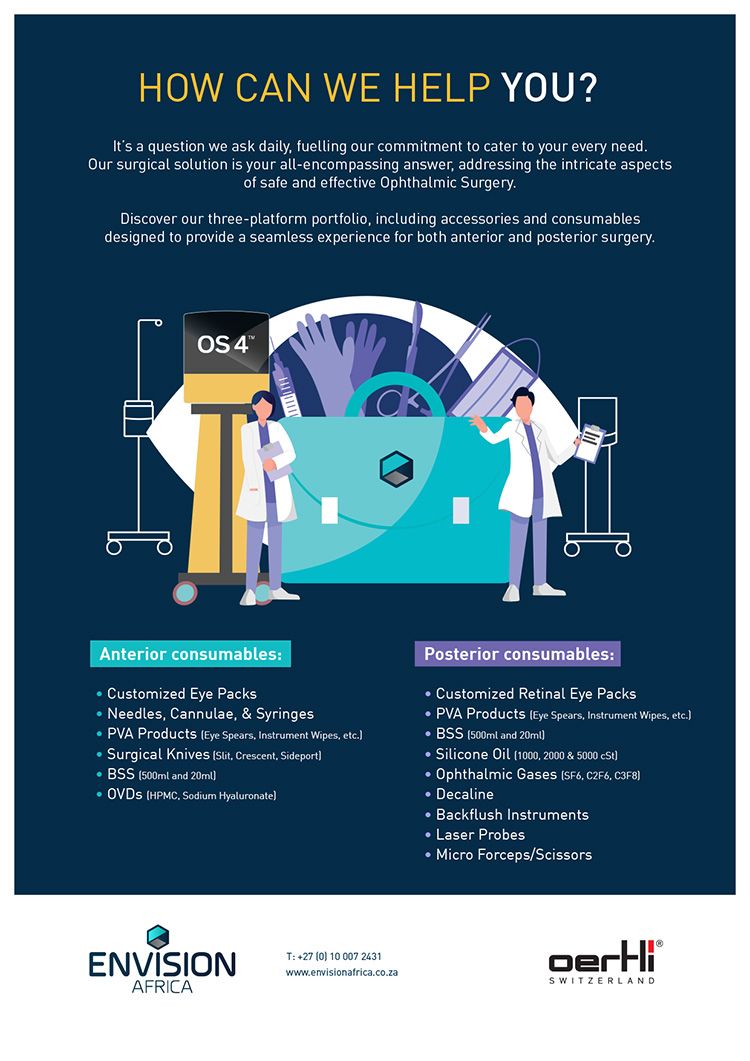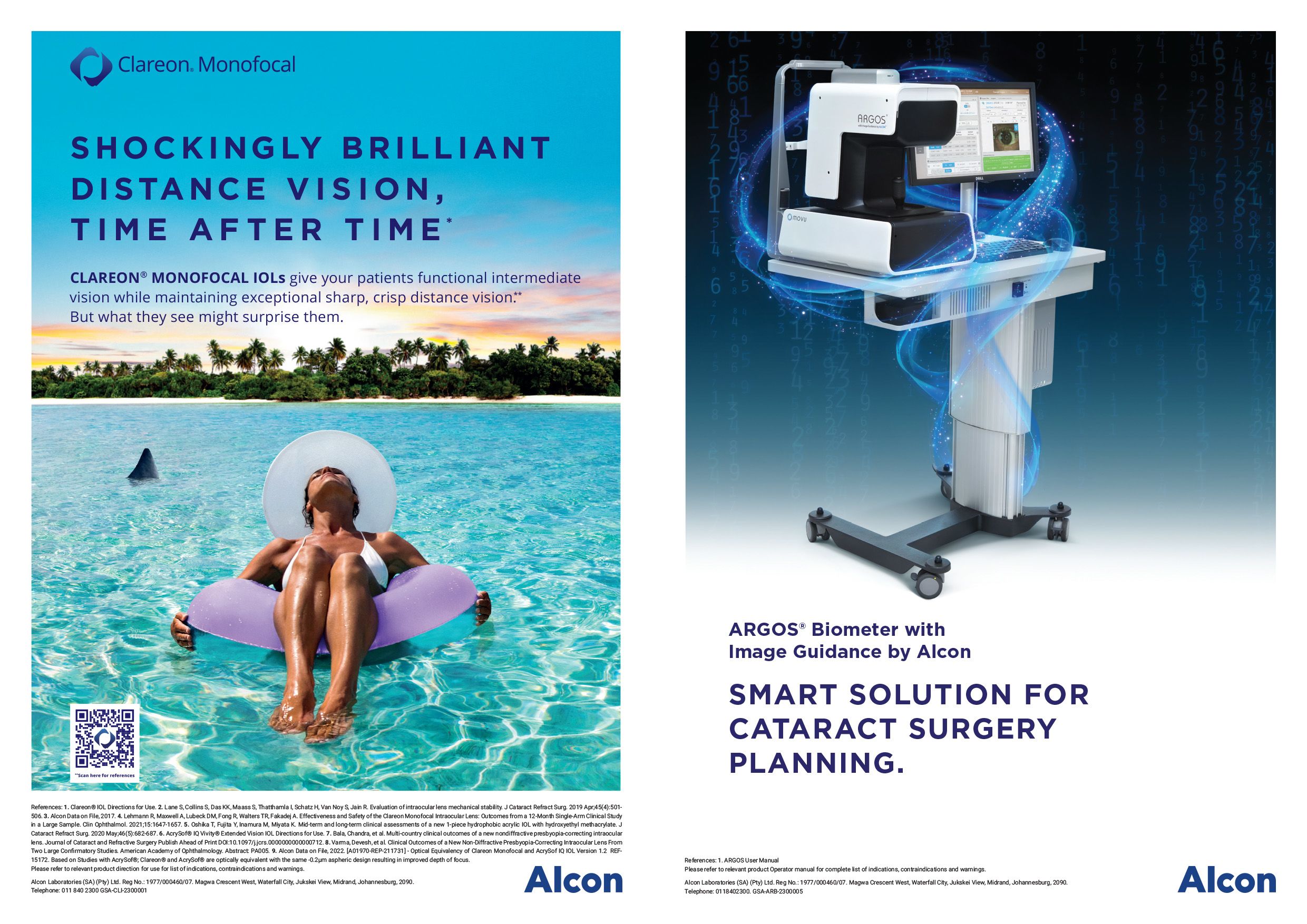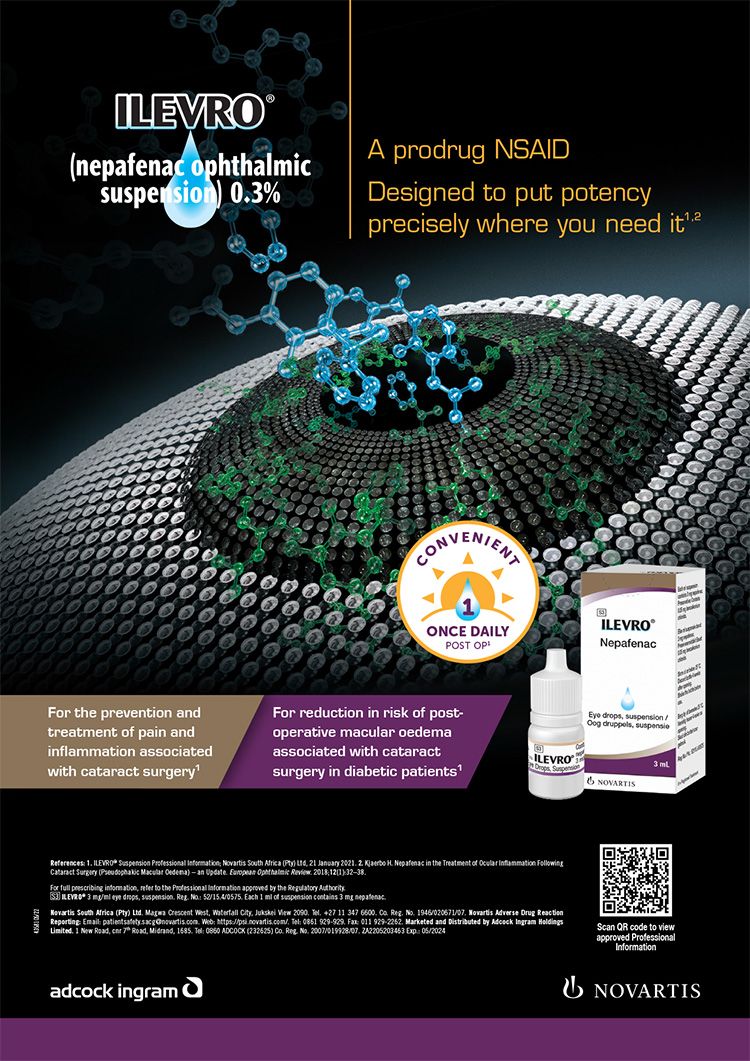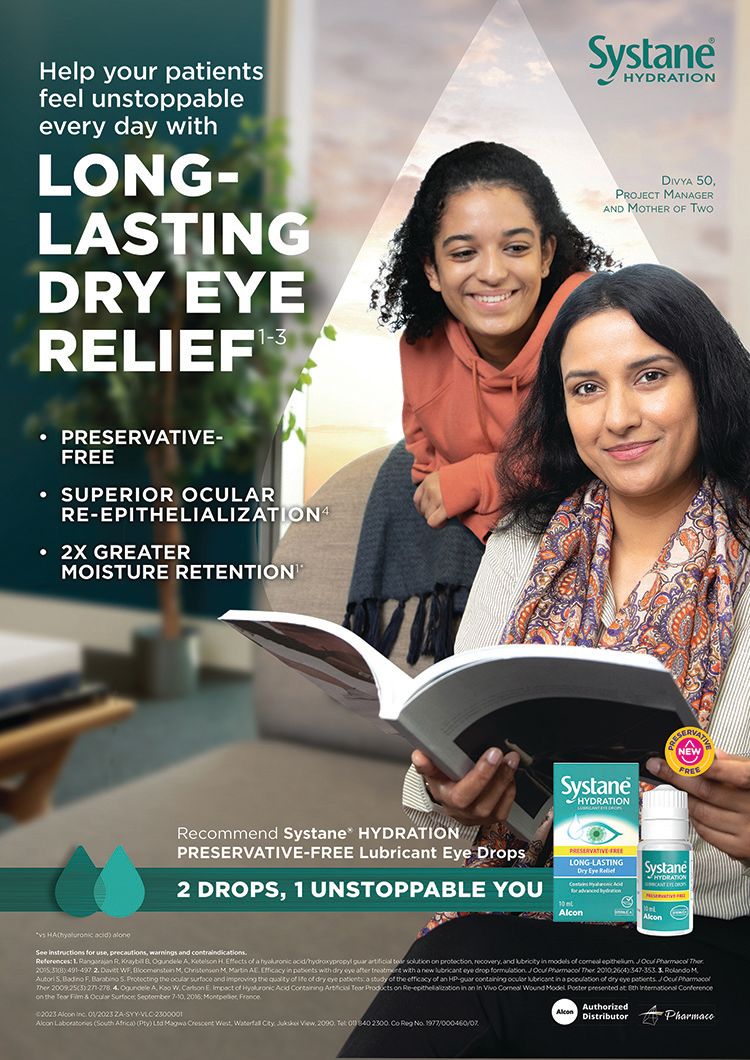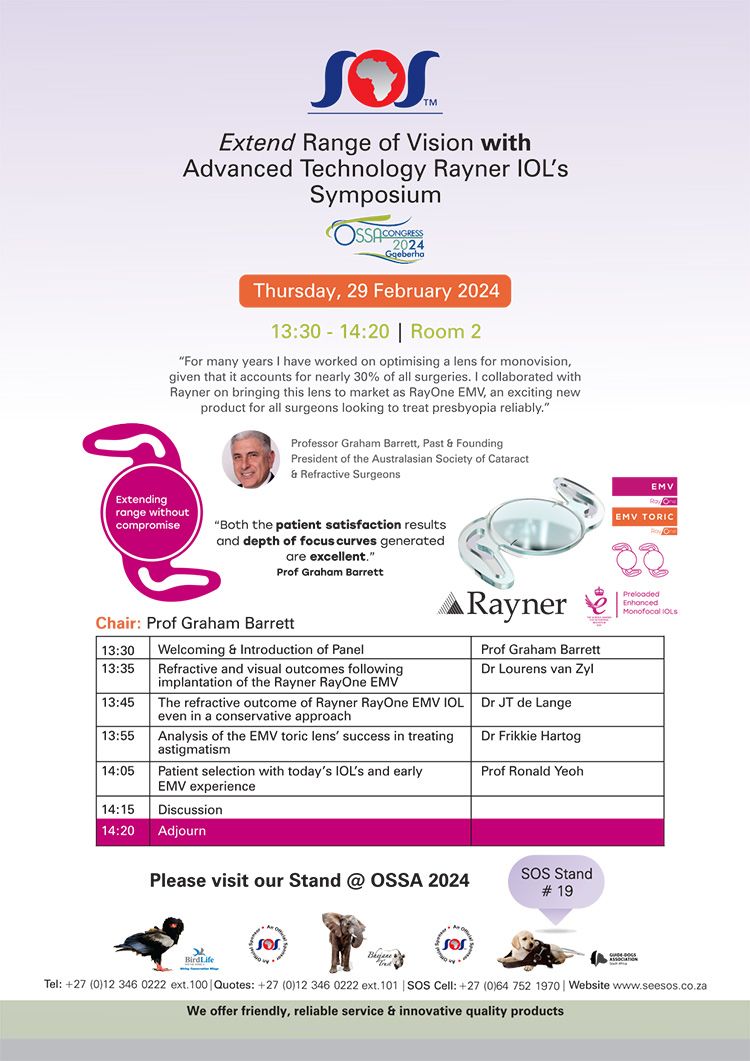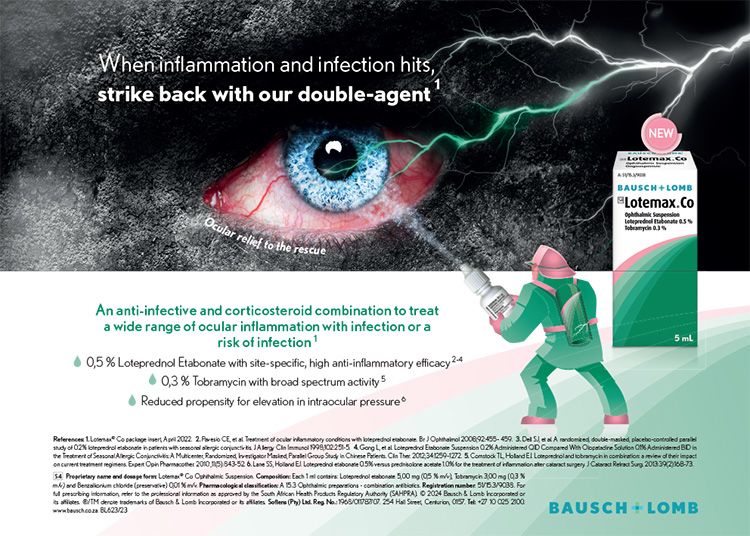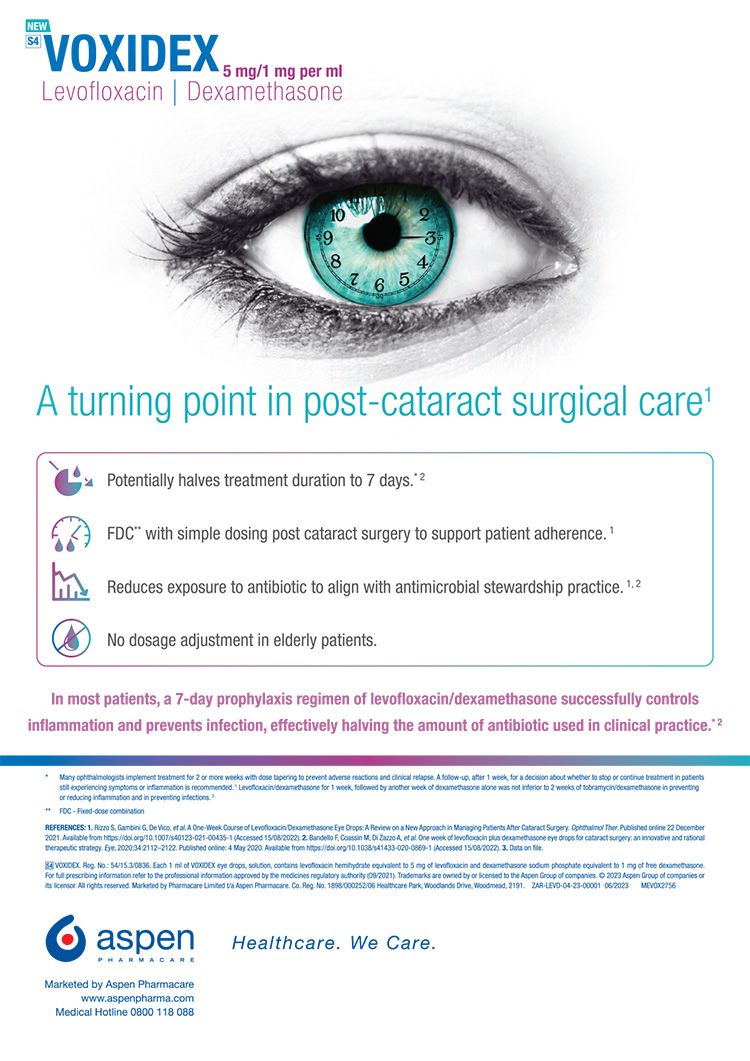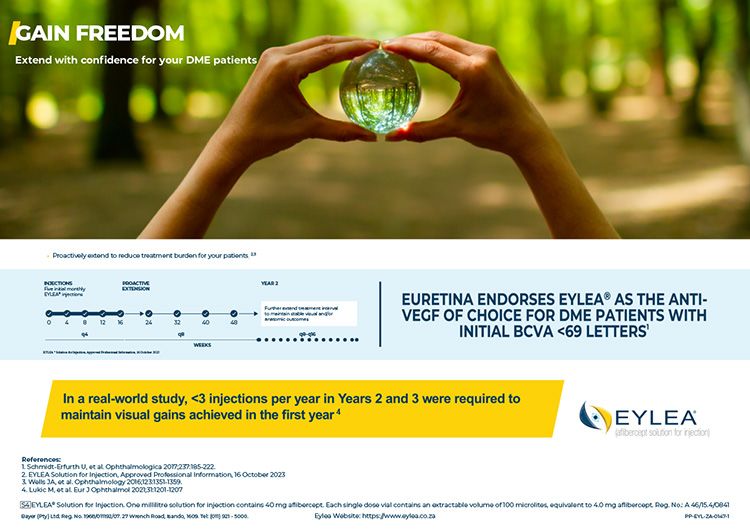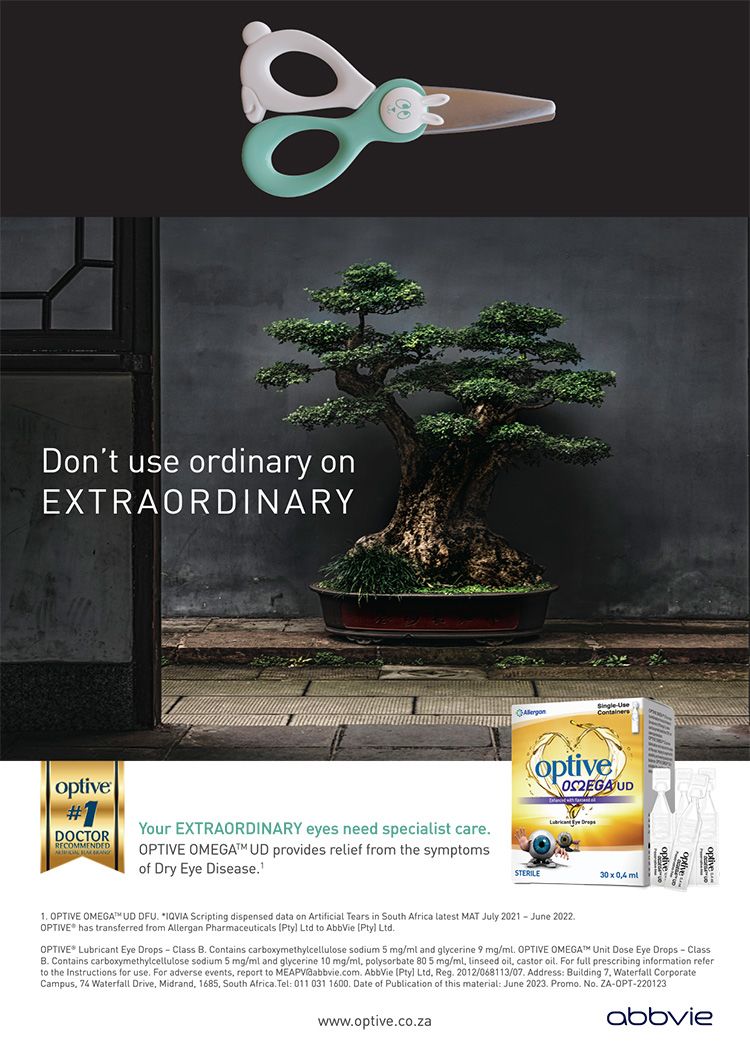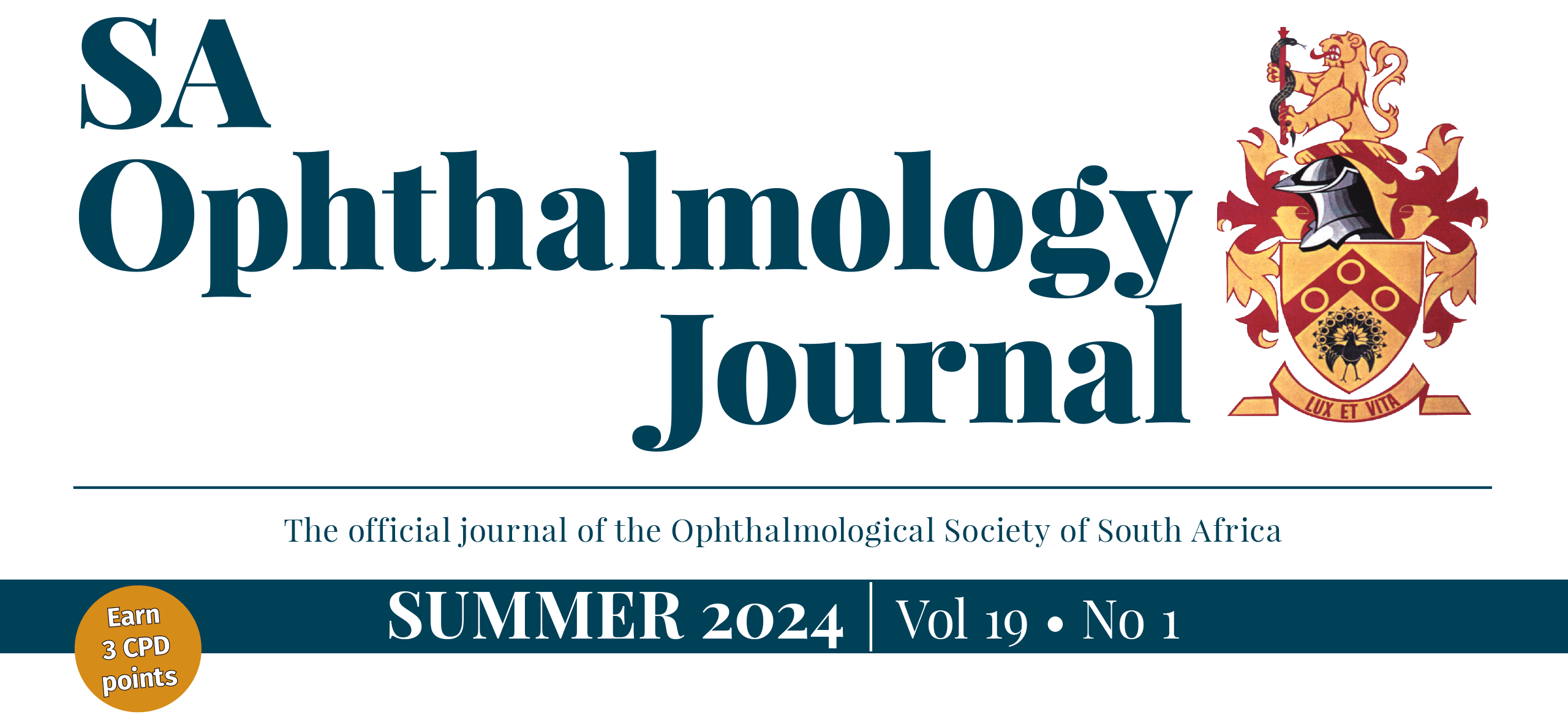

Revolutionising ophthalmic training
Welcome to our first issue of 2024! We have included a review article, two original studies and two case reports in this issue, which is to be published in time for the 2024 OSSA Congress in Gqeberha. One of the original studies hails from the University of Cape Town (UCT), who will also be presenting on the role of simulated surgery training in teaching ophthalmic surgery and the progress that has been made in this regard, at the congress. This topic has been discussed in the SAOJ on a couple of occasions in the recent past and it may be useful to revisit it up here again, especially after the acquisition of the Eyesi virtual simulator and the plan to potentially introduce a similar Alcon unit at the OSSA conference this year.
In November 2023, the UCT Division of Ophthalmology, under the auspices of its Community Eye Health Institute (CEHI), officially launched the Simulation Ophthalmic Surgical (SOS) training programme of its Simulated Surgery Training Unit (SSTU). The launch was attended by, amongst others, representatives from the Royal College of Ophthalmologists (RCOphth) and the European Society of Cataract and Refractive Surgeons (ESCRS). The role of simulation is increasingly being recognised in ophthalmic training for new skill acquisition and refining established techniques. The American Academy of Ophthalmology (AAO) notes that, “Simulation based training has proven value in teaching surgical skills to ophthalmology residents and fellows. Additionally, simulations can be effective for the practicing ophthalmologist to prepare for a specific procedure which he or she has not had recent experience with, prior to performing that procedure on a patient.” While the RCOphth states that, “Simulation training using artificial model eyes and artificial intelligence (AI) is transforming the way trainee ophthalmologists develop surgical and clinical skills by simulating live surgery situations. Frequent practice on simulators enables trainees to become familiar with surgical steps and refine their techniques in a safe environment.” I think that we can all agree that simulated surgery provides a protected environment for developing skills in less experienced trainees; fosters lower stress levels in terms of teaching surgery for trainers; and ultimately is safer for our patients.
The SSTU at UCT, was initiated by Hon A/Prof Will Dean and Emeritus Prof Colin Cook who both helped establish the original wet lab. Will Dean completed the studies that made up his PhD here. These studies centred on manual small-incisional cataract surgery (MSICS) and glaucoma surgery in the form of trabeculectomy. The studies commenced in 2017 and subsequent courses started in 2019. Since 2019, more than 120 trainees from South Africa and 20 other countries around the world have benefited from the courses. Additional courses have since been added, viz. basic microsurgery, cataract surgery by phaco-emulsification and retinal surgery in the form of pars-plana vitrectomy (PPV). Funds raised via donations were used to purchase the Eyesi virtual simulator from Haag-Streit, which is the only one of its kind in sub-Saharan Africa, if not the whole African continent. Eyesi Surgical is a high-end virtual reality simulator for intraocular surgery training. The Eyesi platform can be equipped with interfaces for cataract and vitreoretinal surgery. Training units range from basic skills-training through to surgical procedures and complications management. This acquisition has added tremendous value to the SOS courses.
Orbis International allows access to their online Cybersight platform for pre-training material and videos. Envision Africa set up the initial Phaco lab, Alcon has donated microscopes and phaco machines; and Genop also donated phaco machines. The RCOphth have donated three phaco machines to the unit and ESCRS has agreed to provide funds for expanding the unit, as well as funding trainees and trainers. James Rice was instrumental in acquiring the EyeSi, developing the simulated PPV course and has a keen interest in low-cost simulation. Jonathan Pons from eSwatini, is a regular trainer on the MSICS and glaucoma courses. Jill de Villiers, Jonel Steffen and David Steven have all been actively involved in teaching on courses. Dr Deon Minnies, director of the CEHI, manages many parts of the SOS programme.
The HPCSA / CMSA will now be engaged on the topic and encouraged to consider making simulated cataract surgery courses a prerequisite for trainees who intend applying for registrar training posts, like the AAO and RCOphth, who have already taken this step.
Please continue to support us by submitting your valuable work for publication in the SAOJ.
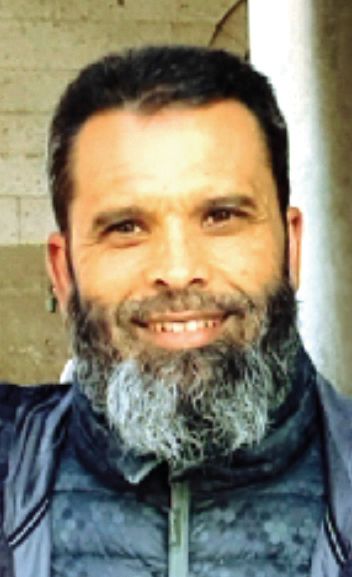
Prof Nagib du Toit MBChB(UCT), DipOphth(SA), FRCS(Ed), FCOphth(SA), MMed(UCT), PhD(UCT)Editor-in-Chief: South African Ophthalmology Journal
Prof Nagib du Toit MBChB(UCT), DipOphth(SA), FRCS(Ed), FCOphth(SA), MMed(UCT), PhD(UCT)Editor-in-Chief: South African Ophthalmology Journal
The CPD questions now have to be completed online.
To complete the questionnaire, go to
https://www.medicalacademic.co.za/courses/sa-ophthalmology-journal-cpds-summer-2024
South African Ophthalmology Journal
guidelines for authors
The SA Ophthalmology Journal is a peer-reviewed scientific journal and the official mouthpiece of the Ophthalmological Society of South Africa. It appears on a quarterly basis.
- The South African Ophthalmology Journal invites review articles, original studies and case reports for submission. Articles should be the original, unpublished work of the stated author. All materials submitted for publication must be submitted exclusively for publication in this journal. Written permission from the author or copyright holder must be submitted with previously published figures, tables or articles. Authors are solely responsible for the factual accuracy of their work.
- A cover sheet is to be submitted with each manuscript. It should contain the title of the manuscript, the names of all authors in the correct sequence, their academic status and affiliations. The ORCID ID number for each author should be supplied (https://orcid.org/). The corresponding author should include his/her name, address, phone and email address.
- Articles should be between 2 000 and 3 000 words in length. A 200-word abstract should state the main conclusions and clinical relevance of the article. Use the headings Background, Methods, Results and Conclusion. Five keywords are to be supplied at the end of the abstract.
- Authors should declare any interests, financial or otherwise, regarding the publication of their article, under the headings of Funding and Conflict of interest. If none, this should be stated. An ethics statement regarding patient consent and/or Ethics Board approval should be included. Authors should also indicate whether the submission forms part of an ‘MMed dissertation by publication’ by stating so clearly on the title page.
- All articles are to be in English and are to follow the Vancouver style of referencing. References should be numbered consecutively in the order that they are first mentioned in the text and listed at the end in numerical order of appearance. Identify references in the text by Arabic numerals in superscript after punctuation, e.g. … trial.13
- The following format should be used for references:
Articles: Kaplan FS, August CS, Dalinka MK. Bone densitometry observation of osteoporosis in response to bone marrow transplantation. Clin Orthop 1993;294:173-78.
Chapter in a book: Young W. Neurophysiology of spinal cord injury. In: Errico TJ, Bauer RD, Waugh T (eds). Spinal Trauma. Philadelphia: JB Lippincott; 1991: 377-94. - Tables should carry Roman numerals,
I, II etc., and illustrations Arabic numbers 1, 2 etc. - Abbreviations and acronyms should be defined on first use and kept to a minimum.
- All figures, tables and photographs should also be submitted electronically. Each figure must have a separate self-explanatory legend. The illustrations, tables and graphs should not be embedded in the text file, but should be provided as separate individual graphic files, and clearly identified. Photographs should be saved as a 300 dpi JPEG file. Graphs and algorithms, which need to be editable, should be saved as MS Word documents or in PowerPoint. Tables should be saved either in MS Word or in a PowerPoint document. Photographs and X-rays need to be suitably anonymised. Permission should be obtained for the use of patient photographs.
- Articles are to be submitted by email to the Editor-in-Chief, Prof Nagib du Toit at the following email address: journaleditor@ossa.co.za The text should be in MS Word. Pages should be numbered consecutively in the following order wherever possible: Title page, abstract, introduction, materials and methods, results, discussion, acknowledgements, tables and illustrations, references.
- The Editor reserves the right to shorten and stylise any material accepted for publication.
- For all accepted articles, authors will be requested to provide five (5) multiple choice CPD questions related to their paper.
- Authors need to disclose whether they used artificial intelligence (AI)-assisted technologies (such as Large Language Models, chatbots, or image creators) in the production of submitted work. Authors who use such technology should describe, in both the cover letter and the submitted work, how they used it. Authors should not list AI and AI-assisted technologies as an author or co-author, nor cite AI. Chatbots (such as ChatGPT) should not be listed as authors because they cannot be responsible for the accuracy, integrity, and originality of the work. Authors should carefully review and edit the result because AI can generate authoritative-sounding output that can be incorrect, incomplete, or biased and all plagiarism that may have been produced by the AI, should be excluded.
- Authors are to insert the following copyright notice on their article submissions:
Copyright © 2022 [insert the Author(s) name(s)].
All rights reserved. Copyright subsists in the Author of this work. No part of this article or included photographs may be reproduced, published, performed, broadcast, transmitted or adapted in any form or by any electronic, mechanical or other means without the written permission of the copyright holder. This article is published by New Media, a division of Media24 (Pty) Ltd with consent of the Author. Any unauthorised reproduction, publishing, or adaption of this work will constitute copyright infringement and render the doer liable under both civil and criminal law.
Contents - Academic
FROM THE EDITOR
Revolutionising ophthalmic training
N du Toit
GUIDELINES FOR AUTHORS
REVIEW ARTICLE
An overview of acute management in chemical eye injuries
E Jansen, A Moodley
ORIGINAL STUDY
Outcomes of penetrating keratoplasty at a tertiary institution in South Africa
Y Theron, N du Toit, M Gajjar
A comparative year-on-year study into the change of patterns of Open Globe Injuries (OGI) in two South African academic eye Centres during the Covid-19 crisis
P Snyman, C Kruse
CASE REPORT
Diagnostic and treatment challenges in a patient with combined superior ophthalmic vein thrombosis and cavernous sinus thrombosis
A Weidemann, N Phatudi
From a BCVA of 0.1 to 1.0 - Refractive correction after radial keratotomy and arcuate keratotomy procedures
S Mallabone, L Coetzee
Contents - Social
MESSAGE FROM THE PRESIDENT
The Delicate Balance: Navigating nuance and diplomacy in discourse
F Moti
EVENTS
2024 South African & Africa congresses and meetings
2024 International congresses and meetings
NEWS
The role of metabolites in understanding glaucoma
Ocular Allergy Study reveals preference
Prosthetics for retinal stimulation
Rare eye diseases: A glance at Stargardt disease and keratoconus
BOOK REVIEW
Cutting for Stone
Author: Abraham Verghese
Reviewer: René Bosman
SA Ophthalmology Journal
The official journal of the Ophthalmological Society of South Africa
ISSN: 2218-8304
Editor-in-Chief
Prof Nagib du Toit | journaleditor@ossa.co.za
Assistant editors
Prof Christopher Tinley | christopher.tinley@uct.ac.za
Dr Naseer Ally | naseerally@gmail.com
Managing Editor
Gill Abrahams | 082 330 9540 | Gill.Abrahams@newmedia.co.za
Layout & Design: Allison McCallum
Advertising Sales
Charissa Piek | 063 281 1205 | charissa.piek@newmedia.co.za
Expert Board
Professors:
Trevor Carmichael, Colin Cook, Nagib du Toit, Priscilla Makunyane, Ismail Mayet, Aubrey Makgotloe, Christopher Tinley, Linda Visser, Susan Williams
Doctors:
Eric Albrecht, Hassan Alli, Naseer Ally, Stephen Cook, Linett du Toit, Leonard Heydenrych, Roland Hollhumer, Mpopi Lenake, Hamzah Mustak, James Rice, Tshilidzi van der Lecq
Subscriptions
Felicity Garbers felicity.garbers@newmedia.co.za
Local incl. VAT R80,00 per annum
Publishing Team
General Manager: Dev Naidoo
Group Account Director B2B: Johann Gerber | Johann.Gerber@newmedia.co.za
Production Manager: Angela Silver
Art Director: David Kyslinger
Digital Manager: Varushka Padayachi
Contact
New Media Johannesburg
Ground Floor, 272 Pretoria Avenue, Randburg 2194
Tel: 011 877 6111 Fax: 011 713 9024
Postal Address: PO Box 784698, Sandton 2146
www.medicalacademic.co.za
Printing: Printed and bound by CTP Printers
Published by New Media, a division of Media24 (Pty) Ltd
Management team
CEO: NewMedia: Aileen Lamb
Commercial Director: Maria Tiganis
Strategy Director: Andrew Nunneley
Chief Financial Officer: Venette Malone
CEO: Media24: Ishmet Davidson
Head office
8th floor, Media24 Centre, 40 Heerengracht, Cape Town 8001
PO Box 440, Green Point, Cape Town 8051
Tel: +27 (0)21 406 2002
www.newmedia.co.za


